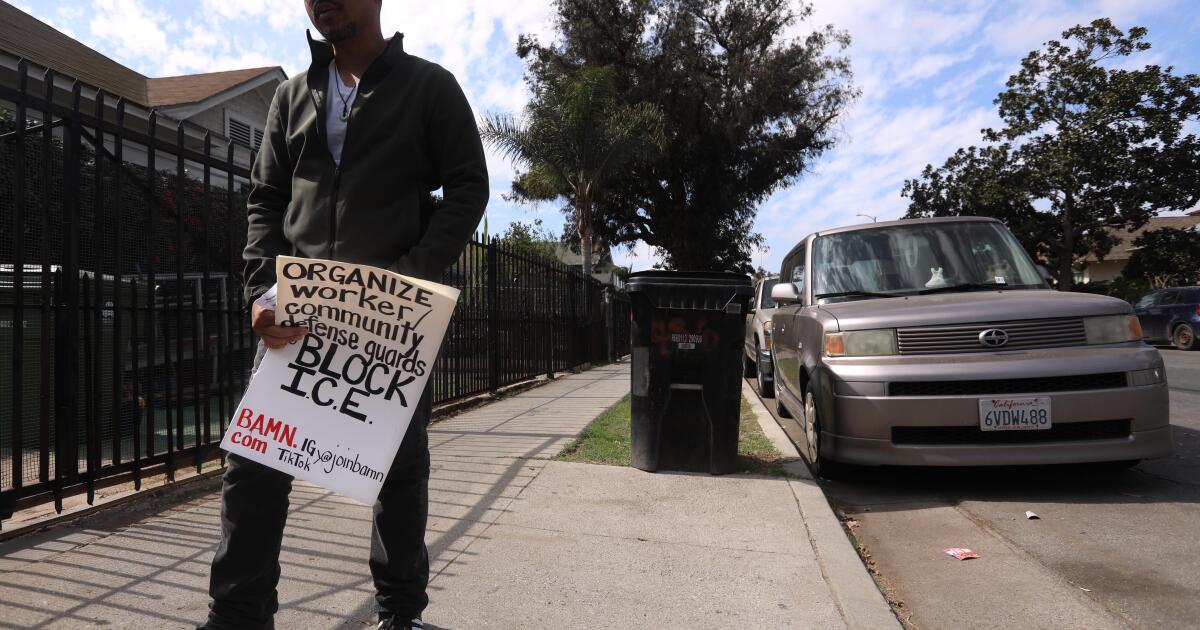California students will be required to complete a course in pocketbook economics — balancing a checkbook, managing credit cards, avoiding scams — to graduate from high school under a bill set to become law, state lawmakers announced Thursday.
“We need to help Californians prepare for their financial future as soon as possible,” Gov. Gavin Newsom said in a statement. “Saving for the future, making investments and spending wisely are lifelong skills that young adults need to learn before they begin their careers, not after.”
This bill, which has drawn criticism from those concerned about another requirement for overcrowded academic schedules, directs school districts and charter schools to offer a stand-alone, semester-long course on personal finance. To meet the requirement, the class cannot be combined with any other course beginning with the 2027-28 school year.
Students graduating in 2031 will have to pass the subject.
The agreement between state legislators avoids a voter verdict at the polls. Supporters of the new requirement had gathered enough signatures to place the proposed requirement, called the California Personal Finance Initiative, on the November ballot. Now they will close that effort.
The new requirement and the bill that would make it law “will benefit countless future generations of Californians,” said Tim Ranzetta, a wealthy Silicon Valley entrepreneur who funded the signature drive for the ballot initiative and also supported the legislation.
Thursday was the legal deadline for Ranzetta to withdraw the referendum initiative, which he said he would do if he was guaranteed that a suitable version of the requirement would become law.
“I want to thank everyone who worked with us on this legislation,” Ranzetta said.
Ranzetta runs a nonprofit, Next Gen Personal Finance, that offers free curriculum and teacher training. She said the materials have reached nearly 100,000 teachers nationwide, including more than 6,000 in California.
While there is broad consensus on the importance of financial literacy, not everyone supports the requirement or the process that generated it.
“There is philosophical opposition to governance by popular vote, where billionaires, by virtue of their wealth, have a disproportionate impact on determining the curriculum in our schools,” said Troy Flint, chief information officer for the California School Boards Association. “We don’t believe that’s the best system.”
He said financial education could have been incorporated into the existing one-semester economics requirement.
“Instruction in financial literacy could be included within that broader economics course already in place without further clogging the curriculum for high school students and without reducing their ability to take an elective course or a course of interest, which this new bill will do.”
The final version of the bill attempts to address this concern, according to a legislative analysis, by allowing students to substitute personal finance for the currently required semester-long economics course.
Former Los Angeles schools superintendent Austin Beutner also expressed concern: “What are you going to give up to create time for financial education?
“It is more important for children to build a foundation in literacy and mathematics before they reach high school,” he said. “If they have that, then there is not much mystery in personal finances.”
The legislation was introduced by Assemblyman Kevin McCarty (D-Sacramento). Not everyone was entirely on board from the start. McCarty introduced a similar bill last year that was amended to make financial education an optional component of economic classes, which could already be done. Ranzetta dropped his support for that bill, and even the watered-down version failed to pass.
The bill's fate this round changed with the backing of the governor and the leaders of each chamber.
“Financial literacy is a critical tool that pays off for life,” said Senate President Pro Tempore Mike McGuire (D-North Coast). “There is a wealth of data on the benefits of learning these valuable lessons in high school, from improving credit scores and reducing delinquency rates to increasing the likelihood that our future generations will maintain three months of emergency savings and have at least less a type of retirement account.”
“Ensuring our students have the skills and knowledge to thrive is critical to California’s continued success,” said Assembly Speaker Robert Rivas (D-Salinas).
Separately, California lawmakers recently added an ethnic studies course to the list of required classes.
Minimum graduation requirements include three years of English and two years of mathematics, including one year of algebra. There are also two years of science, including biological and physical sciences, and three of social studies, as well as two years of physical education, one year of visual or performing arts, world languages, or career technical education.
There are additional requirements if a student wishes to apply to a four-year state university, and selective colleges carefully evaluate the rigor of a student's advanced courses. Individual school districts also often have their own additional requirements.
Colleen Ancrile, a high school teacher in Los Angeles, said her school incorporates financial literacy into its advisory program, a class similar to the old classroom. “Adding a course on top of all the other requirements will be a scheduling challenge. Financial literacy should be incorporated starting in elementary school. Contacts with accounting firms will be made shortly.” [is] “It's actually a better idea.”
“It’s a great idea, but it’s hard to implement,” said Beth Owen, a parent of a Los Angeles student. “Graduation requirements are already hard enough, and often at the end, the student finds something is missing and has to work hard. … Electives are often courses that are taught every year, like band. It doesn’t work to have to drop something like that for a semester. Or it’s leadership or yearbook — year-long commitments that are valuable.”
Irene Luczynski, a Los Angeles-area mother, said she was “shocked” by how few opportunities her ninth-grade son has to take electives: “There’s really no room for him to branch out and try something new, and isn’t that what electives are supposed to do?… Maybe this is trivial, but where’s the fun in school?”
However, there appears to be momentum building for financial literacy. The number of states guaranteeing personal financial education for high school students has grown from 8 in 2021 to 26, according to Ranzetta's organization, which closely follows the issue.
In an earlier analysis, Champlain College’s Center for Financial Education gave California an F in the subject: “Personal finance is not included in graduation requirements, either as a stand-alone course or integrated into another course, and schools are not required to offer financial education courses.”
Researchers gave California some credit because the state education department offers “a robust list of financial education resources.”
Additionally, the state's CalMoneySmart program provides annual grants of up to $200,000 to nonprofit organizations to “provide financial education and financial empowerment programs and services to unbanked and underbanked Californians.”
A report by consulting firm Tyton Partners found that the lifetime benefit California students get from taking a semester-long personal finance course in high school is $127,000, although those figures are difficult to prove and ultimately , are abstract from the real-world experience of young adults.












